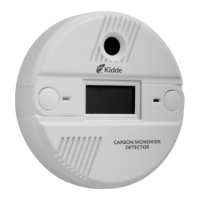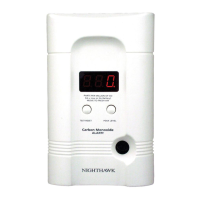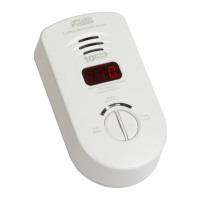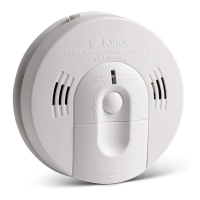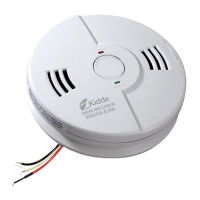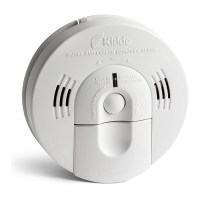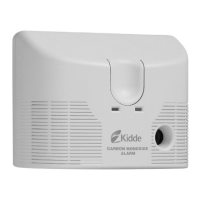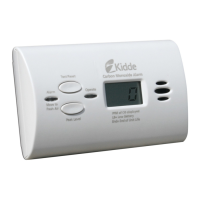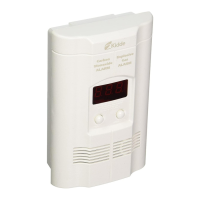20
Maintenance
To keep your alarm in good working order, you must
follow these simple steps:
• Test the alarm once a week by pressing the Test / Reset
button (see page 4).
• Vacuum the alarm cover once a month to remove
accumulated dust. Use the soft brush attachment of your
vacuum cleaner, and unplug the alarm from the
electrical outlet before vacuuming.
• Instruct children never to touch, unplug or otherwise
interfere with the alarm. Warn children of the dangers
of CO poisoning.
• Never use detergents or solvents to clean the alarm.
Chemicals can permanently damage or temporarily
contaminate the sensor.
• Avoid spraying air fresheners, hair spray, paint or other
aerosols near the alarm.
• Do not paint the alarm. Paint will seal the vents and
interfere with proper sensor operation.
• Do not mount the alarm directly above or near a diaper
pail, as high amounts of methane gas can cause
temporary readings on the digital display.
Note: If you will be staining or stripping wood floors or
furniture, painting, wall-papering, or using aerosols or
adhesives for a do-it-yourself project or hobby, before you
begin: Remove the alarm to a remote location to prevent
possible damage to or contamination of the sensor. You
may wish to unplug the alarm and store in a plastic bag
during the project.
The following is a list of substances that at high levels can
affect the sensor and cause an alarm:
Methane, propane, iso-butane, ethylene, ethanol, alcohol,
iso-propanol, benzene, toluene, ethyl acetate, hydrogen,
hydrogen sulfide, sulfur dioxides.
Also most aerosol sprays, alcohol based products, paints,
thinners, solvents, adhesives, hair sprays, aftershaves, perfumes,
auto exhaust (cold start) and some cleaning agents.
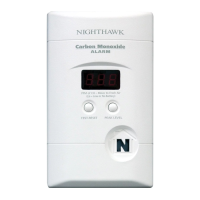
